Last month, UMW Toyota Motor introduced an updated version of the C-HR crossover for the 2019 model year, with a couple of small aesthetic tweaks to keep the B-segment contender fresh. Now, we’re getting the first proper look at the revamped offering as it enters showrooms.
The most noticeable difference are the new alloy wheels, which are now of a two-tone turbine design that matches the 18-inch option found in other markets, but remains in a 17-inch diameter. This wheel design, by the way, has just been introduced in Thailand as well (where Malaysian-market C-HRs are also built), so this change was done at the factory and not by UMW Toyota.
You’ll also be able to spot the silver trim around the front corner air intakes, side mouldings and rear reflectors which, if you recall, is part of the massive accessories catalogue in Thailand. This display unit also sports the new Radiant Green Metallic paint and black roof, which costs an extra RM800 – the same premium as Blue Metallic and Red Metallic (both with the black roof), as well as White Pearl Crystal Shine.
Inside, the only new component is the head unit – the 6.75-inch Display Audio system now supports Apple CarPlay and Android Auto connectivity. Not shown here is the new optional TRD Sportivo Aerokit, which adds on massive overfenders and silver front and rear bumper guards. The whole package, which is built in Thailand and fitted locally, costs RM3,990.
Priced at the same RM150,000 as before, the C-HR continues to offer automatic projector halogen headlights with LED daytime running lights, LED tail lights, front and rear fog lights, keyless entry, push-button start, automatic wipers, dual-zone climate control, leather upholstery, powered driver’s side lumbar adjustment (seat adjustment is still manual), an auto-dimming rear-view mirror, a reverse camera and six speakers.
Safety-wise, there are seven airbags (including one for the driver’s knee), ABS with EBD and brake assist, Vehicle Stability Control (VSC), Traction Control (TRC) and ISOFIX rear child seat anchors, plus a Blind Spot Monitor and Rear Cross Traffic Alert (RCTA).
Under the bonnet sits the same 2ZR-FE 1.8 litre naturally-aspirated four-cylinder engine as before, with Dual VVT-i. Outputs are rated at 137 PS at 6,400 rpm and 170 Nm of torque at 4,000 rpm, sent to the front wheels via a CVT with a seven-speed Sequential Shiftmatic mode.
Looking to sell your car? Sell it with Carro.






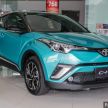
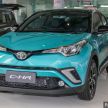
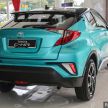
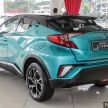
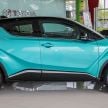
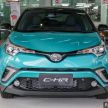
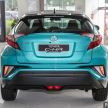
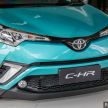
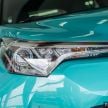
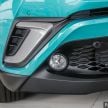
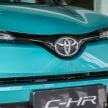
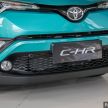
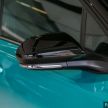
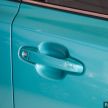
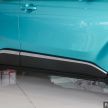
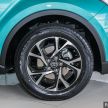
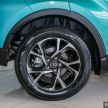
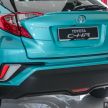
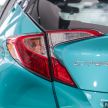
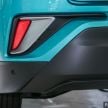
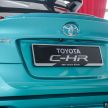
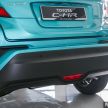
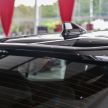
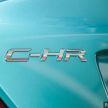
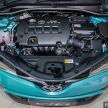
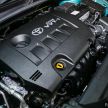
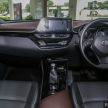
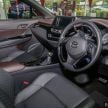
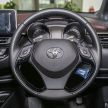



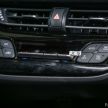
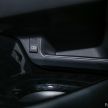
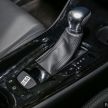
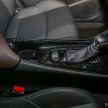
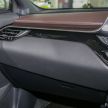
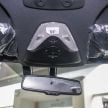
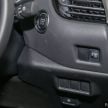
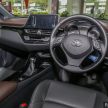
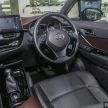
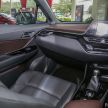
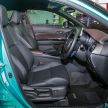
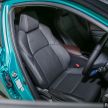
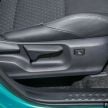
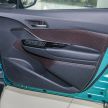
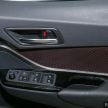
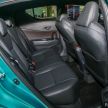
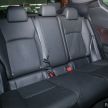
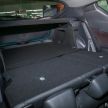
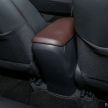
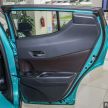
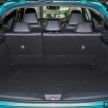
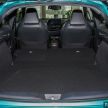
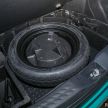

























AI-generated Summary ✨
Comments express mixed reactions to the Toyota C-HR, with many criticizing its design as unattractive and outdated, and some comparing it unfavorably to Chinese cars like the Boyue/X70, which are praised for value and features. Several commenters highlight the C-HR’s high price, halogen headlamps, and lack of modern amenities such as LED headlights, questioning whether it justifies its premium cost. Others emphasize Toyota's trusted quality and good resale value, making it appealing despite criticisms. Sales figures suggest the X70 and HR-V outperform the C-HR in Malaysia, leading some to believe it struggles in the local market. Some comments also mention the car's size as unsuitable for families and criticize UMW’s marketing and feature offerings relative to price. Overall, mixed sentiments range from admiration for Toyota’s reputation to disdain for the car's aesthetics and pricing.